Employee experience is broken: Here's what comes next
Tired of surface-level fixes? It’s time to rethink employee experience from the ground up — and finally move the needle on engagement.

Lee Smith
Minutes
01 August
Employee Experience
Employee Engagement
EX Design
Employee Engagement
EX Design
When employee experience falls short, engagement suffers.
And right now, engagement is stuck. Burnout is rising. People are disengaged, disconnected, and exhausted by change.
If you’re in HR, internal comms or leading your organisation’s employee experience (EX) efforts, you’re probably feeling it too. Despite years of investment in cutting edge tech, high profile programmes, fancy tools, expensive consultants and policies meant to improve the workplace, the reality is sobering: most employees are still not thriving at work.
And right now, engagement is stuck. Burnout is rising. People are disengaged, disconnected, and exhausted by change.
If you’re in HR, internal comms or leading your organisation’s employee experience (EX) efforts, you’re probably feeling it too. Despite years of investment in cutting edge tech, high profile programmes, fancy tools, expensive consultants and policies meant to improve the workplace, the reality is sobering: most employees are still not thriving at work.
The numbers don't lie
Globally, employee engagement remains alarmingly low.
Engagement is the emotional and psychological connection people have with their work — and it’s shaped by the experience that surrounds them.
Gallup’s 2024 State of the Global Workplace report shows that only 23% of employees are engaged—a number that hasn’t budged meaningfully in years. Meanwhile, burnout levels continue to climb, with the World Health Organisation classifying it as an occupational phenomenon. Employees aren’t just tired—they’re emotionally depleted and mentally checked out.
On top of that, we’re witnessing widespread change fatigue. Reorganisations, digital transformations, return-to-office mandates—change has become the only constant, but the support structures to help employees adapt have not kept pace.
Many employees feel they’re simply being done to, not designed for.
Engagement is the emotional and psychological connection people have with their work — and it’s shaped by the experience that surrounds them.
Gallup’s 2024 State of the Global Workplace report shows that only 23% of employees are engaged—a number that hasn’t budged meaningfully in years. Meanwhile, burnout levels continue to climb, with the World Health Organisation classifying it as an occupational phenomenon. Employees aren’t just tired—they’re emotionally depleted and mentally checked out.
On top of that, we’re witnessing widespread change fatigue. Reorganisations, digital transformations, return-to-office mandates—change has become the only constant, but the support structures to help employees adapt have not kept pace.
Many employees feel they’re simply being done to, not designed for.
Why the 'same old' isn't working
The traditional approach to employee experience has focused on programmes, internal campaigns and perks, not real design.
We’ve seen it all before:
These tactics might tick boxes, but they rarely change hearts or habits. Why? Because they don’t start in the right place - with the employee. They start with processes, policies, and platforms—and hope that people will adapt.
They don’t ask:
That’s where we need a fundamental shift.
We’ve seen it all before:
- Annual engagement surveys (often too little, too late)
- One-size-fits-all wellbeing initiatives
- Career planning tools that don’t reflect how people really grow
- Internal communication that’s all gloss and no substance
- Values statements that look great on paper but don’t match lived reality
These tactics might tick boxes, but they rarely change hearts or habits. Why? Because they don’t start in the right place - with the employee. They start with processes, policies, and platforms—and hope that people will adapt.
They don’t ask:
- What’s it like to actually work here, day to day?
- Where are the friction points?
- How do employees feel at each key moment in their journey?
That’s where we need a fundamental shift.
What's next? Designing work around humans
If we want different outcomes, we need different thinking.
The future of employee experience isn’t about adding more. It’s about doing things differently. And that means bringing in the mindset and methods of design thinking—a human-centered approach that starts with empathy and builds from there.
Why design thinking?Design thinking is powerful because it flips the script. Instead of asking “How do we roll this out?” it asks “What do employees truly need and value?” It’s grounded in real research, iterative experimentation, and co-creation with the people it’s meant to serve. Here’s how it can reshape EX:
Rethinking the employee journeyWhen we apply design thinking, we shift from managing processes to curating experiences. We start to reimagine:
A call to action
Employee experience needs a reboot—not a refresh. It’s time to stop patching over broken systems with superficial fixes. HR and EX leaders must become experience designers, not just policy makers.That means leaning into empathy. Embracing experimentation. And being willing to let go of what no longer works, even if it’s what we’ve always done.
Because the stakes are high. Employees today want more than a job—they want meaning, belonging, and a sense that their work (and workplace) is designed with their humanity in mind.
If we can give them that, we won’t just see higher engagement—we’ll build workplaces that are truly worth being part of.
The future of employee experience isn’t about adding more. It’s about doing things differently. And that means bringing in the mindset and methods of design thinking—a human-centered approach that starts with empathy and builds from there.
Why design thinking?Design thinking is powerful because it flips the script. Instead of asking “How do we roll this out?” it asks “What do employees truly need and value?” It’s grounded in real research, iterative experimentation, and co-creation with the people it’s meant to serve. Here’s how it can reshape EX:
- Empathise deeply. Spend time understanding the real, lived experiences of employees—not just what they say in surveys, but what they think, feel and do across their journey.
- Define the real problem. Don’t assume the solution. Burnout, for instance, might stem from clunky systems, lack of clarity, or even unspoken cultural norms—not just overwork.
- Ideate and test. Use rapid prototyping and feedback loops to explore new ways of working—whether it’s rethinking onboarding, designing more meaningful rituals, or simplifying how performance conversations happen.
- Personalise the experience. Recognise that what works for one group may not work for another.
- Design for inclusion and flexibility, not uniformity.
Rethinking the employee journeyWhen we apply design thinking, we shift from managing processes to curating experiences. We start to reimagine:
- How employees join, grow, belong, and leave
- How technology can enable, not frustrate
- How culture is felt, not just stated
- How change is experienced, not just communicated
A call to action
Employee experience needs a reboot—not a refresh. It’s time to stop patching over broken systems with superficial fixes. HR and EX leaders must become experience designers, not just policy makers.That means leaning into empathy. Embracing experimentation. And being willing to let go of what no longer works, even if it’s what we’ve always done.
Because the stakes are high. Employees today want more than a job—they want meaning, belonging, and a sense that their work (and workplace) is designed with their humanity in mind.
If we can give them that, we won’t just see higher engagement—we’ll build workplaces that are truly worth being part of.
Not a member yet?
At The EX Space, we’re here to help you make that shift—from process-driven HR and old-school internal comms to people-centered experience design.
We partner with forward-thinking EX, IC and HR leaders to reimagine the employee journey through the lens of empathy, creativity, and co-creation.
Whether you’re looking to re-design key moments that matter, build internal design capability, or bring your people into the process in meaningful ways, we’re your guide.
Because fixing what’s broken starts with designing something better—together.
👉 Join us today
We partner with forward-thinking EX, IC and HR leaders to reimagine the employee journey through the lens of empathy, creativity, and co-creation.
Whether you’re looking to re-design key moments that matter, build internal design capability, or bring your people into the process in meaningful ways, we’re your guide.
Because fixing what’s broken starts with designing something better—together.
👉 Join us today

